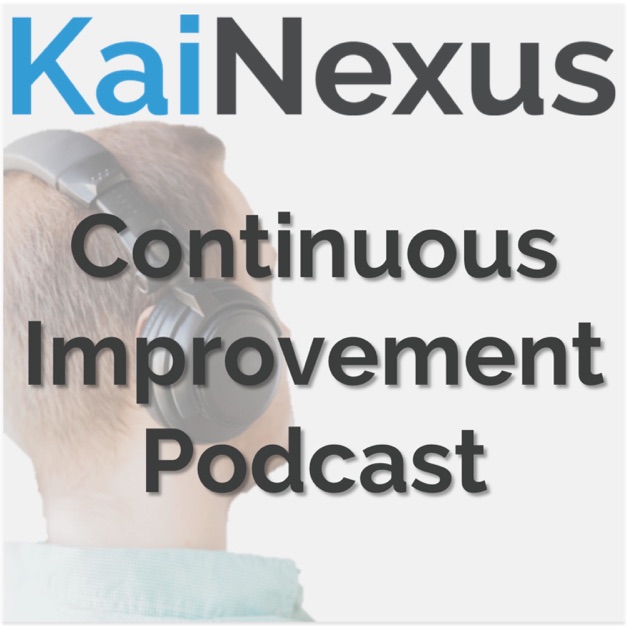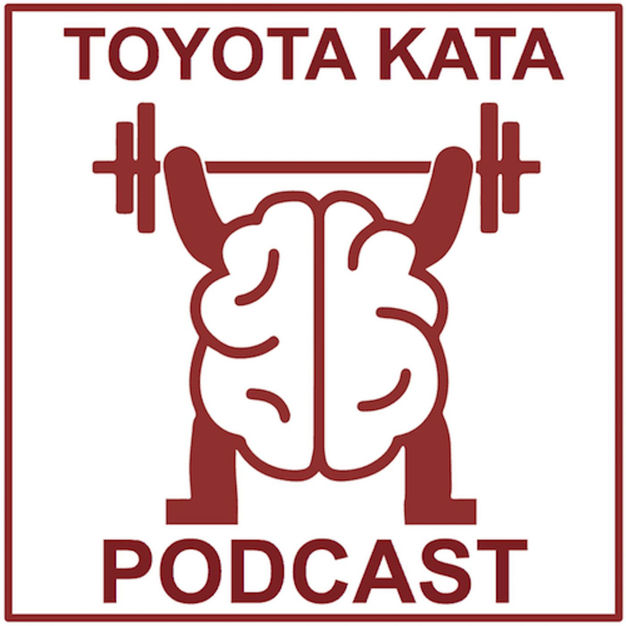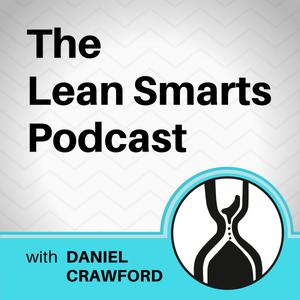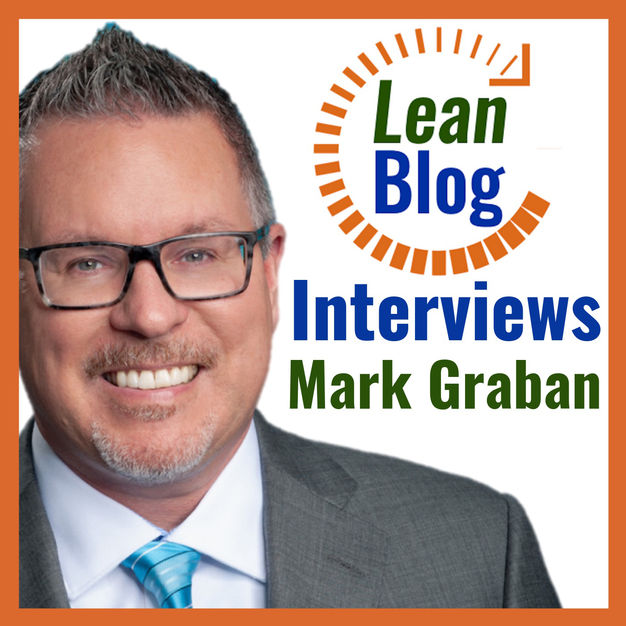
KaiNexus Continuous Improvement Podcast
Mark Graban
One of our KaiNexus customers suggested that we share audio from our webinar series as podcasts. We've done that! And we're also adding content from our KaiNexus blog, read as audio book-style podcasts.
- 26 minutes 7 secondsContinuous Improvement vs. Operational Excellence: Streamlining Business Operations
We are often asked if continuous improvement and operational excellence are the same. They are not, but they are closely related. Continuous improvement involves constantly improving your business processes to reduce waste, cut costs, improve quality, and maximize human potential. It focuses on making each existing process perfect. Operational excellence goes further. It involves setting the organization up for growth by understanding what the market wants and creating an uninterrupted value stream that continuously feeds the need.
It is essential to understand the difference between these two complementary paradigms that guide business operations management so that you can apply elements of both to streamline operations and achieve your most critical strategic goals.17 December 2024, 12:21 pm - 6 minutes 14 seconds15 Benefits of Standard Work
Taiichi Ohno, the father of the Toyota Production System, once said, “Without Standard Work, there is no Kaizen.” That’s a pretty bold statement, but when you think about the continuous improvement cycle, it makes a lot of sense. How can you move from the current state to the desired state if the current state is a moving target? Standard Work, which documents the current best practice for performing a task or process, and ensures that everyone is applying it, is a prerequisite for improvement.
Here are 15 ways that Standard Work benefits organizations that leverage it.
12 December 2024, 4:41 pm - 59 minutes 5 seconds[Webinar] Creating Leader Standard Work (LSW) Across a Distributed Business Model
Presented by Brent Loescher on Nov 19, 2024 Get slides and more
An exploration of implementing LSW throughout Sperber Companies, a distributed Landscape Maintenance business made up of organically-grown business and M&A (read multiple cultures). Covering everything from embracing current cultures, developing an organizational culture with a common language, level setting business leader responsibilities, introducing Lean thinking, and implementing daily rhythms, this webinar will discuss the efforts, hurdles, and learnings this 5-year-old business is living every day. Brent has spent more than 20 years working in and on the business, improving operations within high-speed manufacturing, warehousing, distribution, distributed-services environments, and governmental agencies. A Lean practitioner at heart, Brent received his formal Toyota Production System training while working for Toyota Motor Sales in their North American Parts Operations. While with Toyota, he was responsible for operational design of two new warehouses built in Puerto Rico and Mexico City. A certified TPS trainer, he developed strategic warehouse design standards, while also serving as the Toyota Customer Service Diversity and Inclusion Champion Coordinator. He helped develop a Lean program for the landscape maintenance industry, implementing and evolving continuous improvement programs across the country since 2009. This included co-leading a team focused on the operational integration of a $2 billion dollar merger. Brent is currently responsible for Learning & Development and CI for a start-up Landscape Maintenance & Construction company doing work in 14 states. He has a BA in Business Management from Mercyhurst University and is a retired military veteran, having served 21 years in the US Army and US Army Reserve.
19 November 2024, 9:03 pm - 8 minutes 21 secondsElevate Excellence: Unveiling 9 Quality Improvement Techniques
I often find myself falling into the common trap of believing that if something is worthwhile, it is necessarily difficult. I think we all expect that valuable things are hard. The truth is, however, that sometimes the most effective and impactful things we can do are really quite simple.
When it comes to continuous quality improvement, this is absolutely the case.
Here are 9 examples of quality improvement tools, techniques, and technology that are uncomplicated yet extremely valuable.
12 November 2024, 9:36 am - 7 minutes 50 seconds[Preview] Creating Leader Standard Work (LSW) Across a Distributed Business Model
Mark Graban, from KaiNexus, chats with Brent Loescher about his upcoming webinar: It will be presented live on November 19 from 1:00 pm - 2:00 pm ET Register here An exploration of implementing LSW throughout Sperber Companies, a distributed Landscape Maintenance business made up of organically-grown business and M&A (read multiple cultures). Covering everything from embracing current cultures, developing an organizational culture with a common language, level setting business leader responsibilities, introducing Lean thinking, and implementing daily rhythms, this webinar will discuss the efforts, hurdles, and learnings this 5-year-old business is living every day. About Brent: Brent has spent more than 20 years working in and on the business, improving operations within high-speed manufacturing, warehousing, distribution, distributed-services environments, and governmental agencies. A Lean practitioner at heart, Brent received his formal Toyota Production System training while working for Toyota Motor Sales in their North American Parts Operations. While with Toyota, he was responsible for operational design of two new warehouses built in Puerto Rico and Mexico City. A certified TPS trainer, he developed strategic warehouse design standards, while also serving as the Toyota Customer Service Diversity and Inclusion Champion Coordinator. He helped develop a Lean program for the landscape maintenance industry, implementing and evolving continuous improvement programs across the country since 2009. This included co-leading a team focused on the operational integration of a $2 billion dollar merger. Brent is currently responsible for Learning & Development and CI for a start-up Landscape Maintenance & Construction company doing work in 14 states. He has a BA in Business Management from Mercyhurst University and is a retired military veteran, having served 21 years in the US Army and US Army Reserve. Brent is a girl-dad that, along with his wife, Kim, is anxiously awaiting the birth of their second grandchild. In his free time, he finds a way to see the Green Bay Packers wherever they play, enjoys boating, and spending time being creative around the house.
7 November 2024, 9:09 am - 5 minutes 17 secondsAn Introduction to the Lean Concept of Catchball
Most of us have memories of playing the game of catch either as children or with our children. I really shouldn’t call it a “game” because there are no winners and losers. There is no defense because everyone is on the same side. One participant tries to deliver the ball to the other in a way that they will be able to grab and return it. The ability to catch and throw a ball is important because it is a foundation for success in many other, more complex sports. The Lean idea of catchball involves moving ideas and information from one person or team to another and, much like catch from childhood, it forms the basis for complicated decision-making and policy development.
31 October 2024, 8:25 am - 5 minutes 25 secondsThe 7 Steps of Hoshin Kanri (or Hoshin Planning)
The process you use to develop your strategic plan is as important as the plan itself. Many organizations adopt the Hoshin Kanri method (also known as Hoshin Planning or Strategy Deployment), which integrates daily management with the strategic breakthroughs needed to propel the organization forward. Hoshin Kanri helps create specific, actionable plans and allocates the resources necessary to achieve them.
An important element of Hoshin Kanri is not just the setting of top-down objectives but also ensuring a two-way dialogue between leadership and employees, known as "catchball." This ongoing feedback loop ensures that strategic objectives are both communicated effectively and adjusted based on input from all levels of the organization. The entire process becomes an iterative cycle that aligns with the Plan-Do-Study-Adjust (PDSA) framework, fostering continuous learning and improvement.
Here are the seven steps typically followed in the Hoshin Kanri process:
23 October 2024, 6:16 pm - 59 minutes 32 secondsWebinar: Embedding Change Management into your Continuous Improvement Initiatives
Presented by Melissa Sherman
Why is change so hard? Change is a complex and multifaceted process that often evokes a wide range of emotions and challenges. Despite these challenges, change is an inevitable part of life and is often necessary for growth, progress, and adaptation.
By acknowledging the difficulties associated with change and providing support, encouragement, and clear communications, we can help individuals and organizations embrace change and Continuous Improvements more effectively.
As continuous improvement practitioners, we don’t always think about the impact our continuous improvement initiatives will have on the employees.
Learning objectives: Throughout this session, we will look at various ways to improve the sustainability of our projects. Let’s discuss the importance of making sure we are embedding change management into your continuous improvement efforts. We will look at what change is, the resistance to it, the journey/change curve an individual goes through, the various change models, and some strategies you can use to assist in your efforts.
Accomplished Lean Leader and Sought-after Speaker recognized for driving continuous improvement initiatives and sharing change best practices, honed from 30 years of expertise in process excellence. Holistic ability to drive enterprise Six Sigma, Lean, and Kaizen deployments, delivering quantifiable productivity, efficiency, and waste elimination gains. Coached business teams during organizational adoption of agile solutions for high-level value delivery. Delighted business partners and stakeholders through strategic data-driven roadmap planning and creation.2 October 2024, 8:39 pm - 6 minutes 18 secondsDriving Progress: How to Promote Continuous Improvement in The Workplace
In this episode, we discuss how to create a culture of continuous improvement in the workplace. We'll cover seven surefire ways to promote improvement, including making it ongoing, involving all employees, removing barriers to improvement, celebrating all types of improvement, providing resources and recognition for improvement efforts, and leading by example. By following these tips, you can create a workplace where everyone is constantly striving to be better.
26 September 2024, 8:36 am - 8 minutes 5 secondsYehor Skorodumov - Why I Joined KaiNexus
In today's episode host Mark Graban, a senior advisor with KaiNexus, chats with Yehor Skorodumov, a senior web application developer who joined our team earlier this year. In the episode, Yehor talks about his rigorous and analytical approach to researching companies, including KaiNexus. He also shares about the interviewing process, a little bit about what he does in his role, and what his first few months at the company were like. Learn more about KaiNexus: https://kainexus.com/ And KaiNexus careers: https://www.kainexus.com/continuous-improvement/kainexus-team
24 September 2024, 8:25 am - 8 minutes 52 secondsEmbedding Change Management into your Continuous Improvement Initiatives - Webinar Preview
Mark Graban of KaiNexus talks with Melissa Sherman to preview her webinar... Register here Why is change so hard? Change is a complex and multifaceted process that often evokes a wide range of emotions and challenges. Despite these challenges, change is an inevitable part of life and is often necessary for growth, progress, and adaptation. By acknowledging the difficulties associated with change and providing support, encouragement, and clear communications, we can help individuals and organizations embrace change and Continuous Improvements more effectively. As continuous improvement practitioners, we don’t always think about the impact our continuous improvement initiatives will have on the employees. Learning objectives: Throughout this session, we will look at various ways to improve the sustainability of our projects. Let’s discuss the importance of making sure we are embedding change management into your continuous improvement efforts. We will look at what change is, the resistance to it, the journey/change curve an individual goes through, the various change models, and some strategies you can use to assist in your efforts. About the Presenter: Melissa Sherman Accomplished Lean Leader and Sought-after Speaker recognized for driving continuous improvement initiatives and sharing change best practices, honed from 30 years of expertise in process excellence. Holistic ability to drive enterprise Six Sigma, Lean, and Kaizen deployments, delivering quantifiable productivity, efficiency, and waste elimination gains. Coached business teams during organizational adoption of agile solutions for high-level value delivery. Delighted business partners and stakeholders through strategic data-driven roadmap planning and creation.
11 September 2024, 5:35 pm - More Episodes? Get the App
Your feedback is valuable to us. Should you encounter any bugs, glitches, lack of functionality or other problems, please email us on [email protected] or join Moon.FM Telegram Group where you can talk directly to the dev team who are happy to answer any queries.
 Toyota Kata Podcast
Toyota Kata Podcast
 Lean Smarts Podcast: Lean Manufacturing | Leadership
Lean Smarts Podcast: Lean Manufacturing | Leadership
 WLEI - Lean Enterprise Institute's Podcast
WLEI - Lean Enterprise Institute's Podcast
 Lean Blog Interviews
Lean Blog Interviews
 Lean Blog Audio
Lean Blog Audio